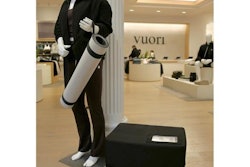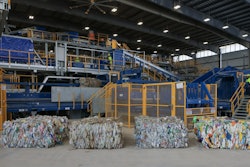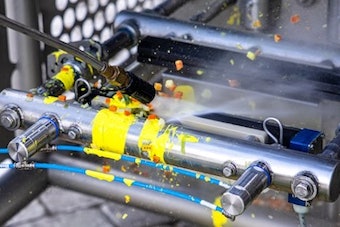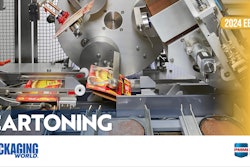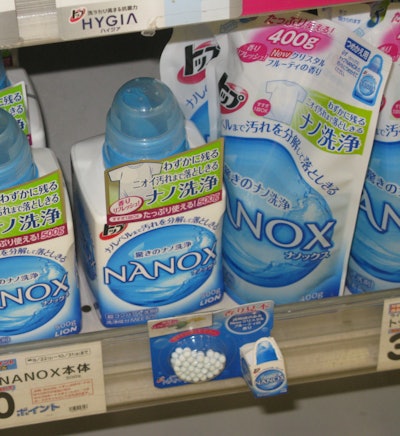
The Japan Packaging Institute organized the October 1 outing as a value-add component to its October 2-5 Tokyo Pack show. I attended as part of a 13-member contingent of the International Packaging Press Organization (IPPO). Joining us were another 50 or so Tokyo Pack exhibitors or attendees who thought it would be a good idea to see firsthand what the Japanese retail world looked like before spending time at the Tokyo Pack exhibition itself. The tour took us not only to an Aeon supermarket but also to a Mitsukoshi department store in the super high-end Ginza district.
Just watching the shoppers roll up to the Aeon supermarket we visited was a clue to the kind of packaging we’d see inside the store. While plenty came in cars, plenty more came on bikes, including the woman who had an infant in her bike’s front basket and a toddler in the back basket. To meet the needs of this demographic, packaging has to be light and easily handled. That’s one reason the refill pack has caught on so well in Japan. The other reason is that Extended Producer Responsibility is much more of a fixture here than in places like the U.S., so if a CPG company can minimize its packaging weight by a third by shifting to refill packs made of flexible packaging, there is a significant financial payback.
Other takeaways, most of them provided in a presentation by Stuart Hoggard, president of IPPO and CEO of PackWebasia.com:
• In Japan, “perfect” packaging implies “perfect product.”
• In Japan, not only are refill pouches widespread, they’re merchandised right alongside the rigid container into which the refill pouch is supposed to be emptied (see photo).
• With a population of about 128,000 000, Japan has a vending machine for every 23 citizens. This has a profound impact on packaging.
• Cultural underpinnings help shape packaging in Japan. Caligraphy, gift-giving, and even Shinto and Zen religions affect package design in one way or another.
• Convenience stores are incredibly popular and numerous in Japan. Some 42,300 of them are in operation, and they average about 30 square meters each. It’s estimated that the urban consumer in Japan lives no more than a five-minute walk from one of these stores, most of which are 7-11, Lawsons, or Family Market. When store clerks ring up a transaction, they key in the buyer’s gender and approximate age. All of this information goes in real time to headquarters to build predictive inventory control. An individual store takes about eight deliveries a day.
• Because it imports just about all the raw materials its economy requires, Japan makes material recovery and recycling a national priority. Its Circular Economy Law, passed in 2000, dictates that waste from one process become the feedstock for the next.










